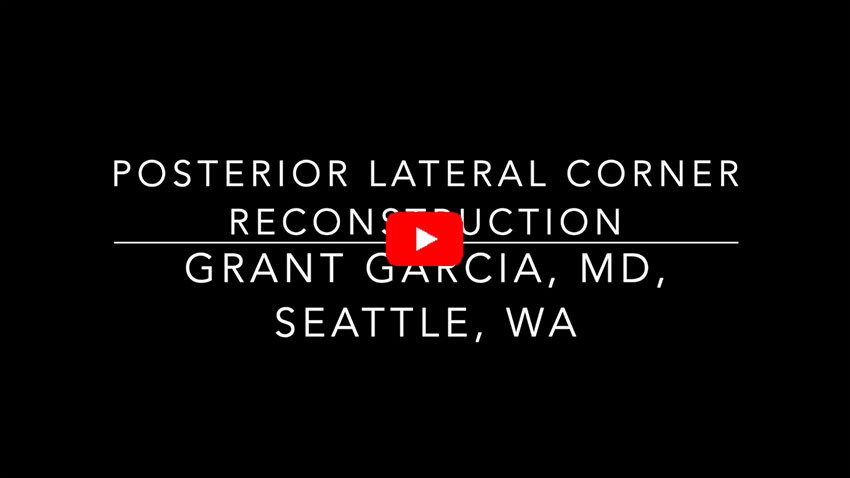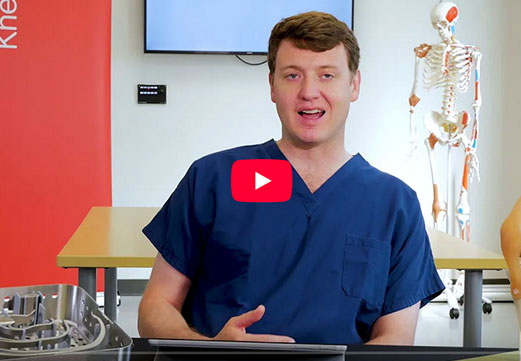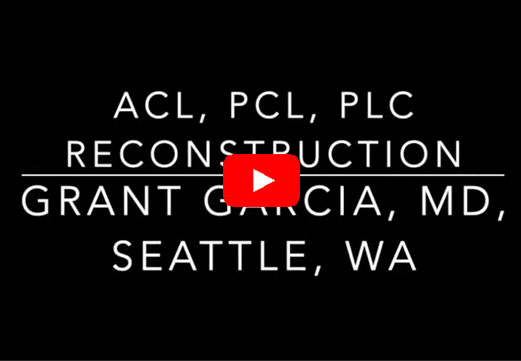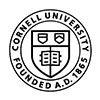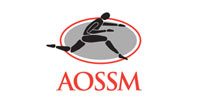Posterolateral Corner (PLC) Injuries and Reconstruction
Posterior Lateral Corner Reconstruction
Introduction
The posterolateral corner (PLC) of the knee is a critical but often overlooked complex responsible for stabilizing the knee against external rotational forces and varus stress. Injuries to this region can result in significant instability, particularly when associated with other ligamentous injuries such as ACL or PCL ruptures. Proper identification and treatment are vital for restoring knee stability, preventing chronic instability, and optimizing long-term functional outcomes.
Posterolateral Corner (PLC) Recon: Epidemiology, Eval. & Decision Making, Surgical Approach
Background
The PLC comprises several anatomical structures, including the lateral collateral ligament (LCL), popliteus tendon, and popliteofibular ligament. These structures collectively provide stability to the knee, particularly resisting varus forces, external tibial rotation, and posterior translation. Injuries to the PLC typically result from traumatic events such as sports-related impacts, high-energy accidents, or rotational injuries. Isolated PLC injuries are rare; more frequently, they occur concurrently with anterior cruciate ligament (ACL) or posterior cruciate ligament (PCL) injuries.
Unrecognized or untreated PLC injuries often lead to chronic instability, functional impairment, and increased risk of osteoarthritis. Thus, timely diagnosis and management are critical for optimal patient outcomes.
Imaging
Accurate diagnosis of PLC injuries begins with a detailed history and clinical examination, including varus stress tests, dial tests, and the reverse pivot shift test. Imaging further assists in confirming the diagnosis and assessing the severity of the injury:
- X-rays: Initial evaluation may reveal avulsion fractures, varus malalignment, or associated bony injuries.
- MRI (Magnetic Resonance Imaging): Gold standard for visualizing ligamentous structures, edema, tearing, and associated injuries to the ACL, PCL, and menisci. It provides crucial information regarding injury severity, tissue quality, and surgical planning.
Indications for Surgery
Surgical intervention is recommended for patients experiencing:
- Significant instability with clinical evidence of PLC injury
- Combined ligament injuries (e.g., concurrent ACL or PCL injury)
- Acute high-grade PLC injuries (Grade III injuries)
- Failed nonoperative management with persistent instability and dysfunction
Nonoperative treatment may be considered only in minor (Grade I or low-grade II) isolated injuries without significant instability or functional impairment.
Dr. Garcia demonstrates his updated PLC reconstruction techniques with an ACL/PCL/PLC reconstruction
Surgical Techniques
Reconstruction of the PLC aims to restore normal knee biomechanics and stability, preventing long-term complications such as instability-induced arthritis. The most employed surgical techniques include:
Anatomic Reconstruction
This technique restores the anatomy of the PLC using grafts, typically autografts (e.g., hamstring tendons) or allografts (e.g., Achilles or tibialis anterior tendons). The reconstruction typically involves the following:
- LCL Reconstruction: Grafts anchored to anatomical insertion sites on the femur and fibula using interference screws or cortical buttons.
- Popliteofibular Ligament Reconstruction: Grafts routed from the fibula to the femoral origin, stabilizing against rotation and varus forces.
- Popliteus Tendon Reconstruction: Occasionally reconstructed or repaired depending on the degree of injury and involvement.
Surgical Approach
- Open lateral approach to adequately visualize and reconstruct anatomical structures.
- Meticulous dissection to protect the common peroneal nerve, a critical step to prevent nerve injury.
Testimonial after ACL and PLC reconstruction
ACL & PLC Recon Testimonial
OSS ACL & PLC Testimonial
Outcomes
Successful PLC reconstruction significantly improves knee stability, reduces pain, and restores function. Clinical studies demonstrate favorable outcomes in patients undergoing combined ligament reconstruction when addressing PLC injuries simultaneously. Restoring PLC integrity is essential to ensure the success of concurrent ACL or PCL reconstructions, as residual instability can compromise graft integrity and knee function.
Patients typically experience marked improvement in stability tests, including varus stress and dial tests, alongside enhanced subjective knee function scores. Long-term outcomes generally indicate a reduced risk of knee osteoarthritis and improved return-to-sport rates compared to non-surgical management.
Recovery Timeline
Recovery following PLC reconstruction involves a structured, phased rehabilitation program to optimize healing and restore function:
Phase 1 (Weeks 0-6):
- Initial immobilization with partial weight-bearing (protected by brace)
- Emphasis on controlling inflammation, gentle passive range-of-motion (ROM), and quadriceps activation exercises.
Phase 2 (Weeks 6-12):
- Transition to full weight-bearing as tolerated
- Active ROM exercises, progressive strength training (closed kinetic chain exercises)
- Early proprioceptive training and neuromuscular control exercises
Phase 3 (Weeks 12-24):
- Advanced strength and conditioning exercises
- Enhanced proprioceptive and balance training
- Gradual return-to-sport-specific activities and dynamic drills
Phase 4 (6 months onward):
- Full return to competitive sports or physically demanding activities
- Continued strength and conditioning program to prevent reinjury
Complete functional recovery typically occurs between 6 to 12 months postoperatively, with elite athletes often returning at approximately nine months.
Additional Surgical Procedures
In complex or chronic cases, additional surgical interventions may be required:
- Alignment Correction (Osteotomies): Chronic PLC injuries with significant varus deformity or knee malalignment may necessitate corrective osteotomy to unload reconstructed ligaments and restore normal biomechanics.
- Concurrent Ligament Reconstruction: ACL, PCL, or meniscal repairs may be required simultaneously to ensure comprehensive knee stability and function.
- Meniscal Procedures: Meniscus repair or partial meniscectomy may accompany reconstruction in cases of associated meniscal injuries.
Chronic PLC Injuries
Chronic PLC injuries present specific challenges due to tissue degeneration, fibrosis, and altered knee biomechanics. Surgical intervention in chronic cases often involves:
- Extensive scar tissue release
- Utilization of allograft tissues for reliable reconstruction, ensuring sufficient graft length and strength
- Frequently requiring combined reconstructive procedures due to chronicity-related secondary changes (e.g., meniscal injuries, cartilage wear, alignment issues)
Outcomes for chronic injuries are less predictable compared to acute reconstruction, often necessitating extensive rehabilitation and careful postoperative monitoring to achieve satisfactory results.
Potential Complications
While reconstructive surgery generally yields good outcomes, potential complications include:
- Infection
- Common peroneal nerve injury (rare but significant)
- Graft failure or re-rupture
- Persistent instability or stiffness
- Progression to osteoarthritis if instability remains
Prompt management of complications enhances long-term outcomes, underscoring the importance of patient adherence to postoperative protocols.
Conclusion
Posterolateral corner injuries are complex, necessitating careful assessment and precise surgical intervention to restore knee stability and function. Early recognition and timely reconstruction are critical for favorable outcomes, reducing the risk of chronic instability and degenerative changes. With meticulous surgical techniques and dedicated rehabilitation, patients can achieve excellent functional recovery, stability, and return to desired activity levels.











